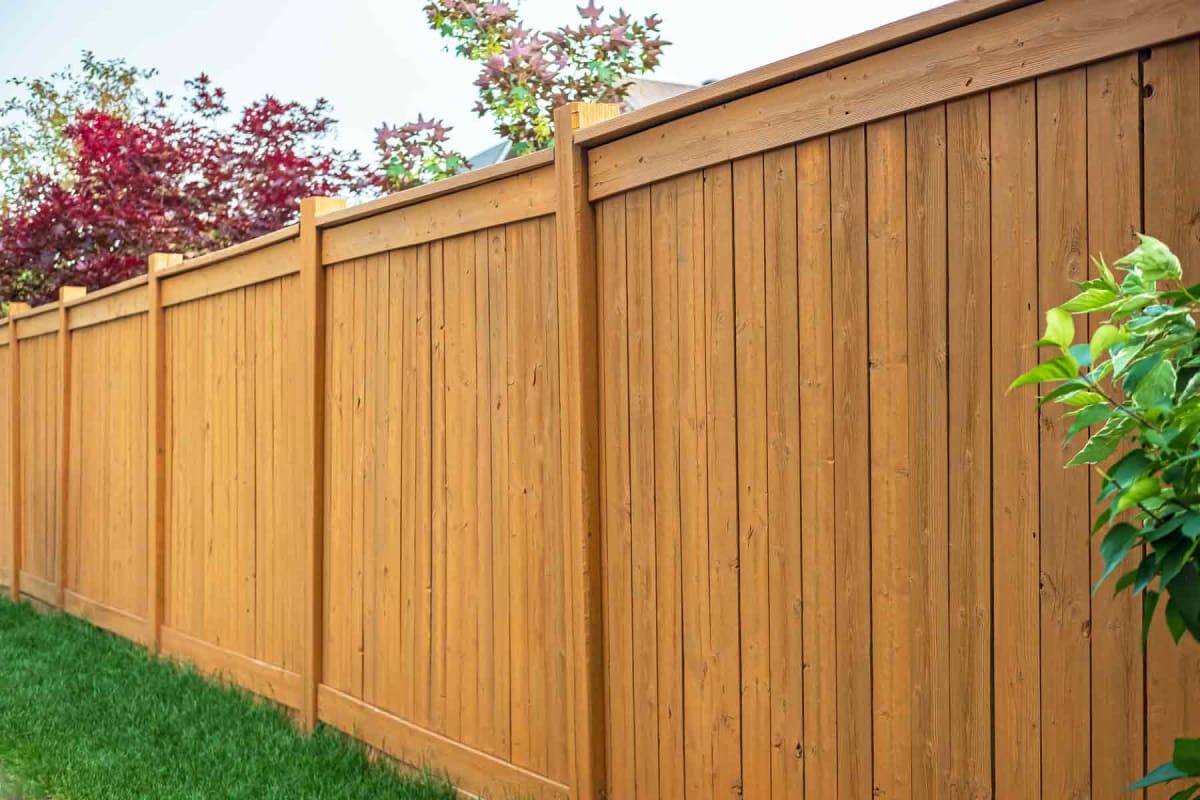All Categories
Featured

Wood fences are a prominent choice for property owners due to their all-natural elegance and flexibility. However, to keep your fencing looking fantastic and functioning well, normal maintenance is crucial. One of the most crucial tasks in fencing maintenance is making a decision exactly how often to stain the timber or repaint. The ideal upkeep timetable can aid protect your fence from the aspects, stop damages, and prolong its lifespan. Right here's an overview to aid you identify when it's time to repaint or discolor your wooden fencing.
Elements Affecting Painting or Discoloring Frequency. A number of crucial variables determine how usually you should paint or tarnish your wood fencing. These include the type of wood, the environment in your region, and the level of exposure your fence has to the aspects.
- Climate and Weather Condition Conditions. The climate where you live plays a significant function in how quickly your fencing will put on down. Severe weather such as extreme sunlight, hefty rainfall, or freezing temperatures can quicken the damage process.
Sunny Climates: In locations with lots of sunlight, UV rays can create the wood to dry, discolor, and split. Therefore, you might require to paint or restain your fencing every 2 to 3 years to stop damage. Rainy or Humid Areas: In places where rainfall and moisture are frequent, wooden fences take in moisture, which can bring about bending, decaying, or mold and mildew development. Regular staining is needed in these regions, typically every 1 to 2 years. Cold Climates: Freezing temperature levels and snow can cause the paint or discolor to peel off. If your area experiences cool winters months, you might need to freshen the surface every 3 to 5 years to keep your fence in good problem. 2. Kind of Timber. The wood species utilized for your fence will likewise identify the frequency of paint or staining. Woods tend to be much more durable than softwoods, and each sort of timber responds in a different way to paint or tarnish.
Cedar and Redwood: These woods are normally immune to rot and pests, but they can lose their shade with time because of UV exposure. Discoloration or sealing these sorts of timber every 2 to 3 years helps preserve their look. Pine and Fir: These softwoods are extra vulnerable to wetness damages and require more frequent maintenance. You may need to restain or repaint these fences every 1 to 2 years to maintain them safeguarded from the aspects. Pressure-Treated Timber: While pressure-treated timber is made to resist rot, it still needs to be discolored or sealed to avoid dampness absorption. A fresh layer of stain or sealant may be needed every 2 to 3 years. 3. Discolor vs. paint. Whether you repaint or stain your fence can significantly affect the maintenance schedule.

Paint: Paint offers a strong layer of defense that blocks dampness and UV rays. Nevertheless, it can peel off, split, or discolor gradually, especially with long term direct exposure to the aspects. Typically, a painted fence requires to be repainted every 3 to 5 years. Discolor: Tarnish soaks right into the timber and offers a more natural appearance while still offering security. Stained fences often tend to show put on faster than painted ones, as the stain can discolor or get rid of. You will likely require to restain your fence every 2 to 3 years, depending upon the direct exposure to sun and rain. 4. Noticeable Indications of Wear. While a basic upkeep schedule is useful, you need to likewise watch on the problem of your fence to identify when it's time for a fresh coat of paint or discolor. Search for these indicators:
Discoloring or Staining: If your fencing has actually shed its original shade or has become gray and weathered, it's time to reapply a paint or tarnish to recover its look. Peeling or Fracturing: If the paint or stain begins to peel off or break, it's a clear indicator that the safety layer is no more doing its work. This can cause water damage, so it is essential to address it asap. Water Absorption: Conduct a straightforward water test by spraying some water onto the surface of the fencing. If the water beads up, the fence is still secured. If the water soaks in, it's time to restain or paint. 5. Proper Maintenance Techniques. For the very best outcomes, it is essential to prepare the timber effectively before painting or staining. Beginning by cleaning up the fencing to remove dust, mildew, or mold and mildew. Repair any kind of damages, such as splits or loosened boards, to make sure the fencing remains in great problem before applying a fresh layer.

Pick a dry, mild day for painting or discoloring to stay clear of the surface drying out as well swiftly or unevenly. Constantly use paint or tarnish according to the supplier's guidelines, and allow adequate drying time between layers.
Conclusion. In general, wood fences must be repainted or stained every 2 to 3 years, depending upon the environment, kind of timber, and exposure to the elements. Maintaining an eye on the look of your fence will certainly help you determine when it's time to refresh the finish. Whether you choose to discolor or paint, routine maintenance will certainly safeguard your fence from the weather condition and keep it looking lovely for many years to come. By following a proper upkeep timetable, you can guarantee that your wooden fence stays solid, durable, and cosmetically pleasing throughout its life expectancy.
Latest Posts
Eco-Friendly Bath Remodels with Bath Fitter
Published Apr 21, 25
1 min read
Flooring Professionals That Treat You Like Family
Published Apr 21, 25
1 min read
Discover the Auto Specialists Behind Montclare Auto Repair - Your Trusted Team
Published Apr 21, 25
2 min read